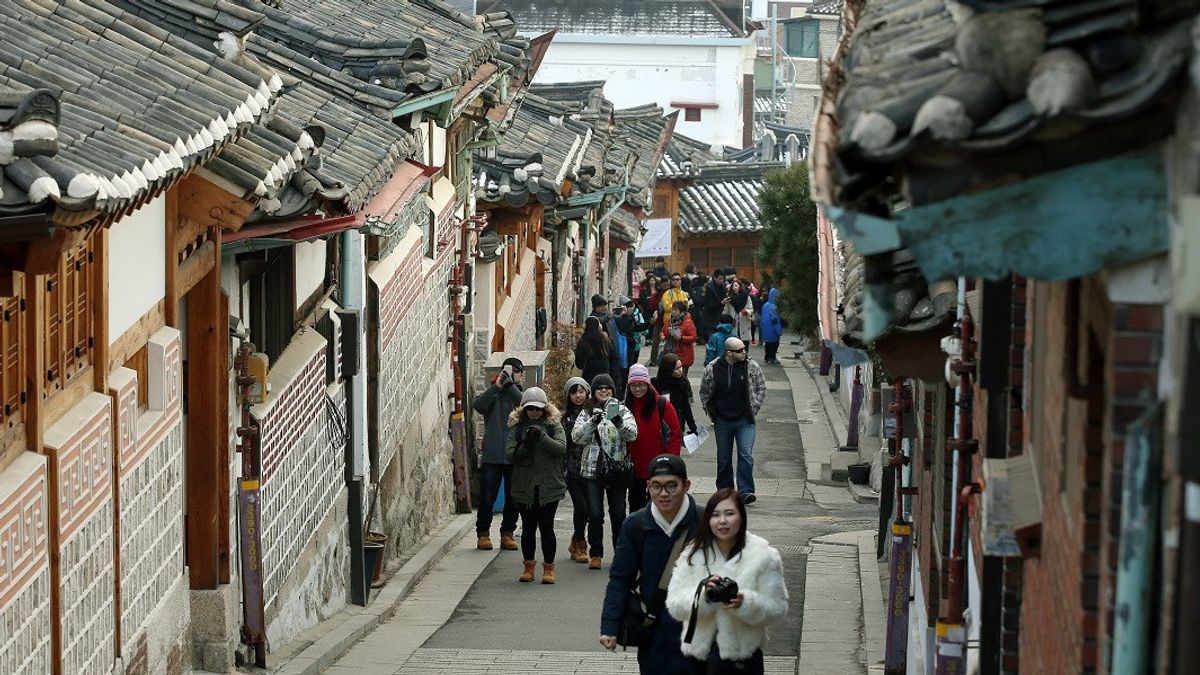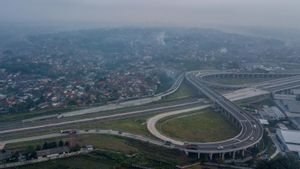JAKARTA - The historic Bukchon Hanok Village area in Seoul, South Korea will impose tourist restrictions starting this month to address tourist excesses, the Jongno District Office announced late last month.
The curfew will limit tourist access to the most popular and densely populated village area along the 11-gil Bukchon-ro, dubbed the red zone, from 5 p.m. to 10 a.m.
Those who violate the regulations will be fined up to 100,000 won (IDR 1,139,622) after March when the district office will end the trial phase and officially launch the policy, reported by The Korea Times November 14.
Meanwhile, residents, business owners and guests at the hanok residence will be released from the curfew.
Bukchon-ro 5-ga-gil and Gye-dong-gil, which have housing roofs, coffee shops and restaurants, are designated as orange zones. The district office plans to assign employees to monitor and guide tourists rather than set curfews.
Bukchon-ro 12-gil is designated as a yellow zone, which is also planned to be monitored by district offices.
Carteran buses with tour groups will be prohibited from entering the 1.5-kilometer Buchon-ro section from Anguk Station at Seoul Metro Line 3 to the entrance to Samcheong Park.
After the trial period starting next July, the local government plans to permanently block chartered buses by January 2026.
Located in the northern quiet city center, Bukchon Hanok Village is a traditional residential area built in the Joseon Dynasty in 1392-1897.
Its narrow culverts filled with traditional hanok homes with distinctive wooden poles and roof tiles attract many domestic and international visitors, who often come wearing traditional Korean costumes.
However, along with the growing popularity of this area among tourists, residents face problems with tourist excesses, such as excessive noise, litter disposal, to violations of privacy, day and night.
Some tourists were even caught trying to enter private homes or peeking at without permission, according to local residents.
As a result, many residents chose to leave, leading to a 27.6 percent decline in the village population over the past five years, according to the district office.
The number of complaints submitted to district offices also jumped from 56 to 202 during the same period.
Last year, the village attracted about 6.4 million visitors, which means more than 1,000 times the population in the area, which amounts to around 6,100.
The district office has placed officers speaking several languages around the village to guide international visitors and inform them of curfews.
To further inform foreign visitors about the new policy, the district office sent letters to more than 200 tourism-related organizations and institutions, including the Ministry of Culture, Sports and Tourism, the Korean Tourism Organization, and the Seoul Tourism Organization.
SEE ALSO:
The district office is also considering allocating fines collected for the development of the environment.
Separately, the Saha Busan District Office has taken similar steps to preserve and develop the Gamcheon Cultural Village.
Up to 30 percent of the profits made from restaurants and souvenir shops in the area were distributed to local residents.
The English, Chinese, Japanese, Arabic, and French versions are automatically generated by the AI. So there may still be inaccuracies in translating, please always see Indonesian as our main language. (system supported by DigitalSiber.id)


















